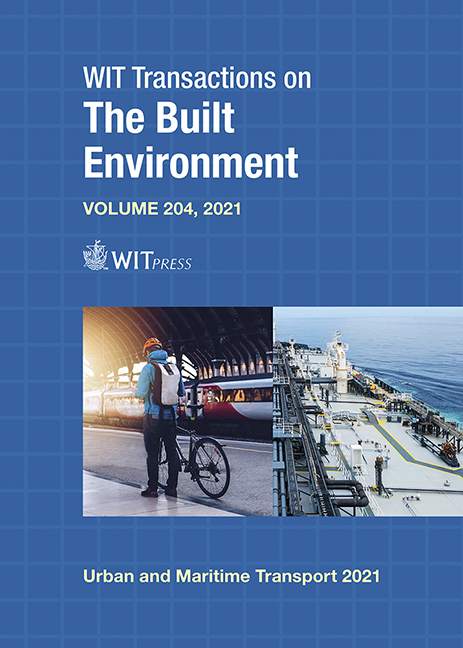CYCLING CULTURE: FROM USERS’ PERCEPTIONS TO PLANNING POLICIES
Price
Free (open access)
Transaction
Volume
204
Pages
12
Page Range
233 - 244
Published
2021
Paper DOI
10.2495/UT210191
Copyright
Author(s)
MARIA GRAZIA BELLIZZI, LAURA EBOLI, CARMEN FORCINITI
Abstract
The current levels of air pollution and the noticeable consequences of climate change are at the heart of many social movements today. In this contest, a much faster transition towards more sustainable urban transport and land use patterns is needed. Planning policies should take more seriously actions that direct users’ behavior from the use of private car to a mobility based on cycling, walking, and public transport. However, if on the one hand several case studies show how in some countries the cycling culture is really entrenched, on the other hand some contexts need more effective transport policies. In this work, the case study is represented by a little urban area of the southern Italy where about 120,000 inhabitants live. The mild climate and the flat region of this area have motivated our research. This work has the aim to understand why in an urban context, with characteristics that are suitable for the use of the bike, the cycling culture is missing. Furthermore, by analyzing users’ perceptions on the existing infrastructures, we want to give a contribution to identify the right policies for promoting and managing cycling mobility. Data collected by a face-to-face survey have been used for our purposes. Four cycle paths with different characteristics are object of this study. More specifically, interviewed users were asked to provide their perceptions concerning several aspects and elements that they experienced while cycling. From the proposed analysis, it is possible to conclude that the improvement of the existent bike network could promote bike use. In addition, the results could be useful to identify convenient policies for encouraging people behavior to cycling culture.
Keywords
sustainable mobility, cycling culture, users’ perceptions, transport policies





